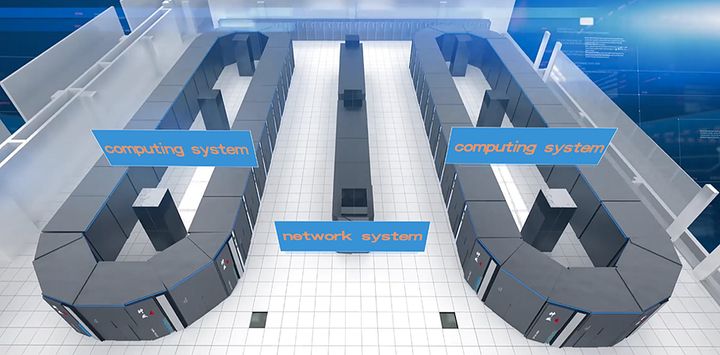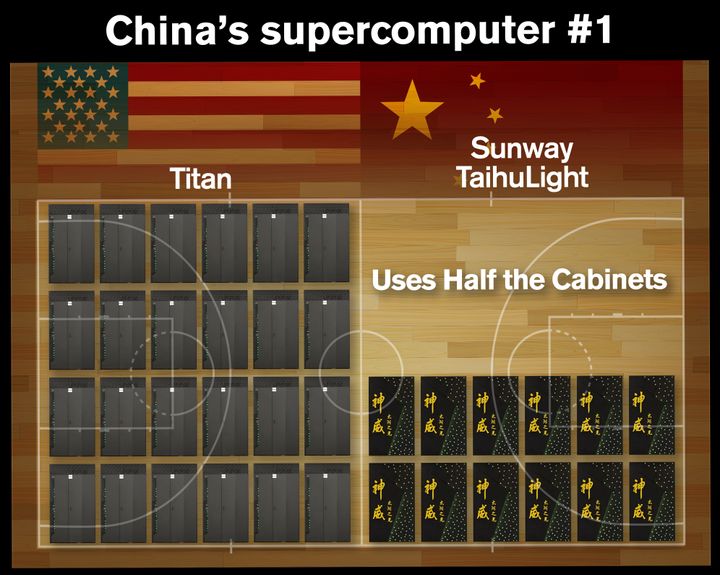
World's #1 supercomputer
Having worked in our national labs for the U.S. Department of Energy as part of its high performance computing initiatives for 25 years, I can only imagine U.S. scientists’ dejection on learning that the Chinese are kicking the “FLOP” out of us.
Last week, the United States took third place in an important game. The sad part is that this is a game the U.S. invented and dominated for decades. Specifically, the game is known as the TOP500 list, and it ranks the most powerful computers in the world using a benchmark called LINPACK. The benchmark measures the number of FLoating Point OPerations per second (FLOP/s) that a computer can apply to a particular application problem. This equates to the amount of computing power that can be directed to model and simulate complex physical systems such as cars, airplanes, the weather or even nuclear weapons.
The stunning news: China has taken first place on the TOP500 list with a machine known as Sunway TaihuLight that delivers 93 petaFLOP/s (quadrillions of calculations per second) on the LINPACK benchmark. Perhaps most interesting and challenging for the United States is the fact the computer is made of 100 percent indigenous Chinese components. Previous Chinese supercomputers relied on U.S.-designed and -manufactured processors.
The U.S. is losing the supercomputer race and the fear is not that the U.S. is No. 2 today, but that we will be No. 2 forever and the Chinese will be able to out compete us in key industries.

The No. 2 computer on the list is also Chinese, the Tianhe-2, and uses Intel-based processors. It delivered 33.86 petaFLOP/s on the LINPACK benchmark. The most powerful U.S. computer on the list, Oak Ridge National Lab’s Titan, comes in at No. 3 and achieved 17.59 petaFLOP/s. Another discouraging piece of news is that China surpassed the U.S. and is now the country with the most computers on the Top500 list. This is unprecedented.
While the LINPACK game is interesting, the real issue of importance is what these supercomputers mean to national and economic security. Powerful computers play a vital role in the modeling and simulation of military weapon systems, especially nuclear weapons. China has made it clear that it believes a country cannot be a superpower without supercomputing.
As mentioned above, these computers are also important for economic security. Increasing levels of computing power are integral elements of important industries ranging from aerospace to automobiles to health care to oil and gas. For this reason, for the last 10 years, the U.S. Council on Competitiveness has facilitated the High Performance Computing Advisory Council (HPCAC). The mission of the group, whose members come from industry, academia and national laboratories, is to promote the idea that “to out-compute is to out-compete.” The importance of U.S. supercomputing supremacy is also the focus of a White House Executive Order on the National Strategic Computing Initiative (NSCI). So, here are my top-5 ways the U.S. can regain the number one position:

The United States must step up its pace in response to China’s 93 petaFLOP/s machine. The U.S. Department of Energy has been discussing an exaFLOP/s (1000 petaFLOP/s) machine for almost 10 years and has held numerous workshops on the challenges and potential uses for such a machine. This resulted in the announced procurement of three systems that will put the country at 150 and 180 petaFLOP/s in 2017 and 2018 respectively. Those machines being built by IBM and Intel are important steps, however, the challenge is that it is clear the Chinese architecture is scalable to much greater levels of computation, and it will be difficult for the U.S. to keep up.
About the author
Alex Larzelere is senior fellow at the U.S. Council on Competitiveness and is a member of its High Performance Computing Advisory Committee. Previously, using our national lab supercomputers, he developed advanced modeling and simulation capabilities for nuclear energy at the U.S. Department of Energy. He has worked with Argonne, Idaho, Lawrence Livermore, and Oak Ridge national laboratories to provide tools that are used to create improved insight into advanced nuclear energy technologies. His blog was originally published at larzelerellc.com.
